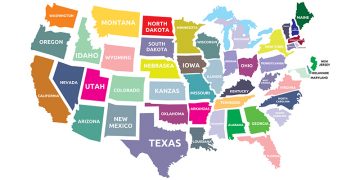Explanations behind the Food and Fertilizer Shortage
The terrible climate, the Russian intrusion of Ukraine, and a deficiency of manure have prompted fears of a worldwide food emergency.
This infographic will assist you with grasping the issue by featuring three critical variables behind the mounting food emergency.
1. Recent Food Shortages
Other than the conflict in Ukraine, factors including the COVID-19 pandemic and environmental change brought about almost one billion individuals going hungry last year, as per United Nations.
France’s wine industry saw its littlest collection starting around 1957 every 2021, with an expected deficiency of $2 billion in deals because of progressively higher temperatures and outrageous weather patterns.
Intensity, dry season, and floods likewise crushed crops in Latin America, North America, and India lately. Between April 2020 and December 2021, espresso costs expanded 70% after dry seasons and ice obliterated crops in Brazil.
Even with different emergencies, the World Bank as of late declared monetary help of up to $30 billion to existing and new undertakings in regions like farming, sustenance, social security, water, and water system.
2. The Fertilizer Shortage
Starting from the start of the Russian attack on Ukraine in February 2022, the conflict has disturbed shipments of compost, a fundamental wellspring of supplements for crops.
Russia is the world’s top exporter of nitrogen manure and positions second in phosphorus and potassium compost sent out. Belarus, a Russian partner likewise battling with Western approvals, is another significant compost maker. Likewise, the two nations on the whole record for more than 40% of worldwide products of the harvest supplement potash.
Here are the main 20 manure exporters internationally:
| Rank | Country | Exports Value (Billions in USD) |
|---|---|---|
| #1 | 🇷🇺 Russia | $12.5 |
| #2 | 🇨🇳 China | $10.9 |
| #3 | 🇨🇦 Canada | $6.6 |
| #4 | 🇲🇦 Morocco | $5.7 |
| #5 | 🇺🇸 United States | $4.1 |
| #6 | 🇸🇦 Saudi Arabia | $3.6 |
| #7 | 🇳🇱 Netherlands | $2.9 |
| #8 | 🇧🇪 Belgium | $2.6 |
| #9 | 🇴🇲 Oman | $2.6 |
| #10 | 🇶🇦 Qatar | $2.2 |
The principal objective of manure trades from Russia is huge economies like India, Brazil, China, and the United States.
In any case, many agricultural nations — including Mongolia, Honduras, Cameroon, Ghana, Senegal, and Guatemala — depend on Russia for something like one-fifth of their manure imports.
Moreover, the conflict strengthened patterns that were at that point upsetting stockpiles, for example, expanded storing by major creating countries like China and sharp leaps in the cost of petroleum gas, a critical feedstock for manure creation.
3. Global Grain Exports
The bar of Ukrainian ports by Russia’s Black Sea armada, alongside Western authorizations against Russia, has deteriorated worldwide store network bottlenecks, causing expansion in food and energy costs all over the planet.
This is generally on the grounds that Russia and Ukraine together record almost 33% of the worldwide wheat supply. Wheat is quite possibly of the most-involved crop on the planet yearly, used to make an assortment of food items like bread and pasta. Moreover, Ukraine is likewise a significant exporter of corn, grain, sunflower oil, and rapeseed oil.
| Producer | Grain Exports in Million Tons (MT) |
|---|---|
| 🇺🇸 United States | 93MT |
| 🇷🇺 Russia & 🇺🇦 Ukraine | 87MT |
| 🇦🇷 Argentina | 56MT |
| 🇪🇺 EU | 50MT |
| 🇧🇷 Brazil | 44MT |
| Other | 87MT |
Because of the bar, Ukraine’s products of oats and oilseed dropped from 6,000,000 tons to 2,000,000 tons each month. Following two months of talks, the two nations marked an arrangement to resume Ukrainian Black Sea ports for grain sends out, raising expectations that the global food emergency can be facilitated.











































































